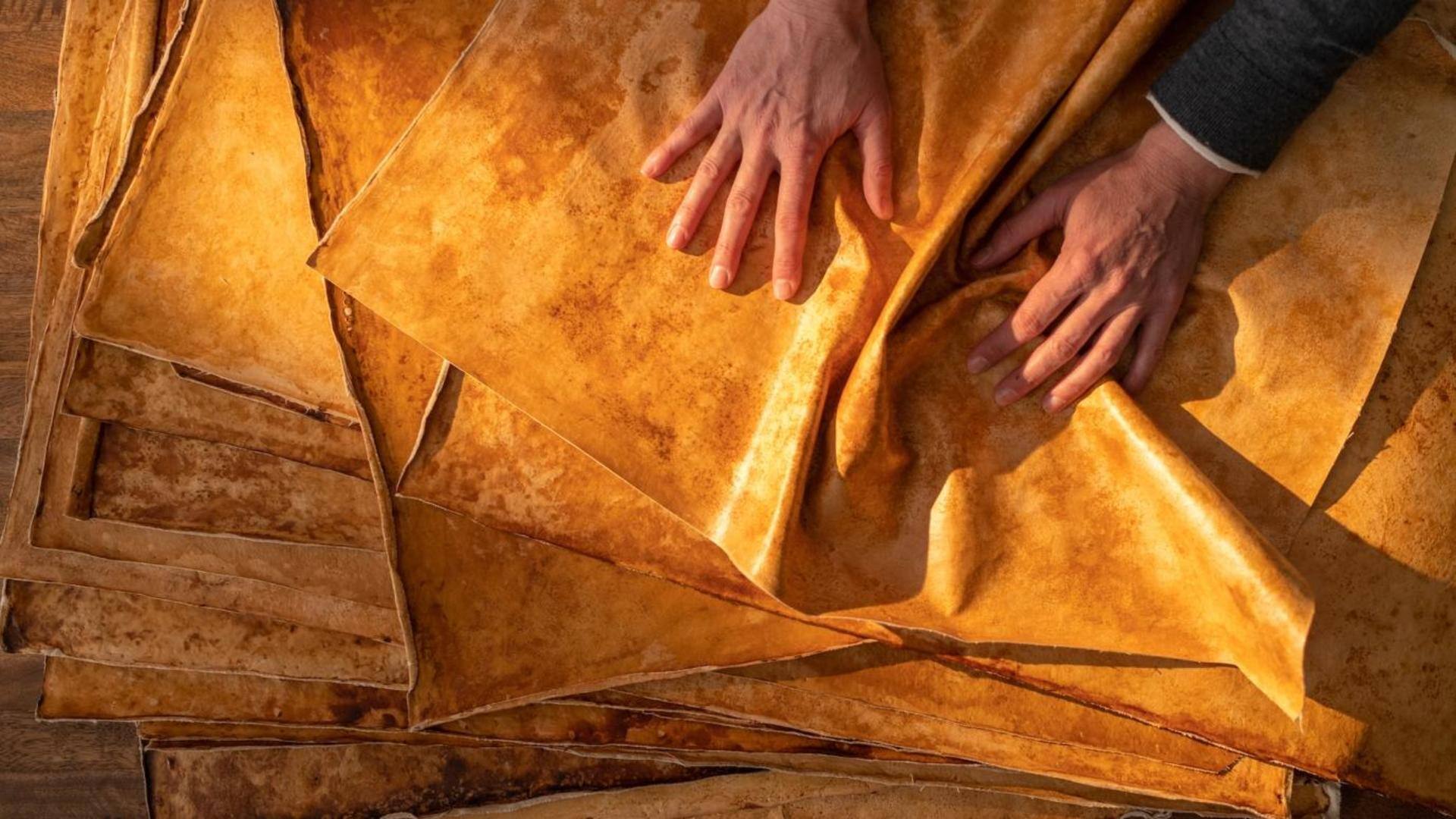
Researchers make vegan leather that can heal itself if damaged
What's the story
Scientists have developed vegan leather from fungi and what's interesting is that the leather could repair itself if damaged. The 'self-healing' leather, as researchers put it, was developed from the threadlike structures of mushrooms, called mycelium. The team believed that if the growth conditions of mycelium were adjusted, the mycelium could preserve its ability to regenerate if it were to undergo any damage.
Context
Why does this story matter?
Imagine your torn leather jacket could fix itself instead of needing a complete replacement. That might be possible in the future. Mycelium leather has already been garnering attention for its potential use as a leather substitute. For instance, California-based MycoWorks is developing a mycelium-based material that has the look and texture of leather but is free of animal parts.
How
How did researchers create vegan leather?
The team first grew mycelium in a medium containing proteins, carbohydrates, and other nutrients. A layer formed at the top of the liquid broth, which researchers collected, cleaned, and dried. The team ended up with a thin, rather frail leather-like material. Notably, the scientists used chemicals and temperatures which were sufficient to form the leather, while allowing parts of the fungi to remain functional.
Information
Chlamydospores can grow more mycelium if the conditions are conducive
The part of the fungi left undisturbed were chlamydospores—small nodules present on the mycelium. Chlamydospores can bounce back to life from their dormant state and grow more mycelium, provided the conditions are conducive. Per the study, chlamydospores may be "key to the material's self-healing properties."
Test
Researchers punched holes into the leather
The team punched holes in the leather and treated the damaged areas with the same growth medium that was used to produce the material so as to revive the chlamydospores. They observed that the mycelium regrew over the damaged areas, repairing the leather. Once the leather had 'healed' itself, the regrown areas were found to be as firm as the undamaged sections.
Potential
Further study will involve making the leather stronger
Small patches were slightly visible on the damaged leather. Researchers hope to further study how to make the leather stronger and determine how to regulate the growth of chlamydospores. Else, someone could "walk out in the rain, and then all of a sudden find that [their] jacket is growing, or perhaps [has] mushrooms popping out of it," said Martyn Dade-Robertson, a research team member.
Implications
The technique could be commercialized in the next decade
Dade-Robertson believes that the technique that the team has come up with can go beyond the stage of being a proof-of-concept and into commercialization as soon as the next decade. "New methods for controlling and optimizing mycelium materials are needed, as well as a better understanding of the biological mechanisms behind regeneration," notes his study, published in the journal Advanced Functional Materials.